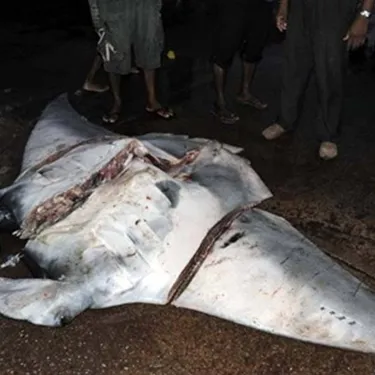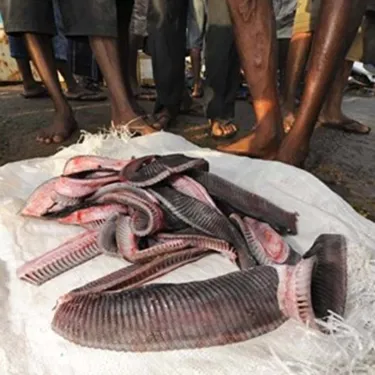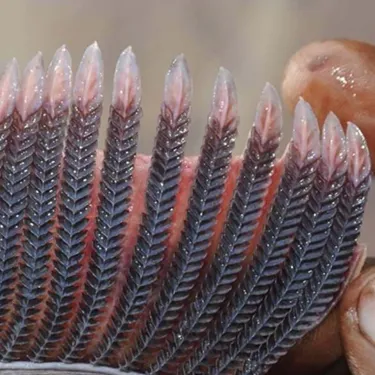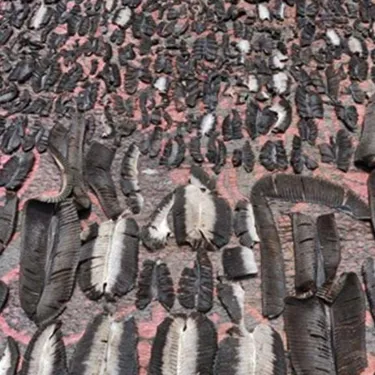Manta Threats
Bycatch
Mantas are often accidentally caught and killed by indiscriminate fishing methods.
Fisheries
Generally the flesh of sharks and rays is not considered as good to eat as that of other bony fish so for centuries they have been avoided by fisherman. However as numbers of more popular species, such as cod and tuna, are depleted, some fishermen have started targeting Mantas. Due to its low quality, Manta meat is often dried and sold as animal feed for chicken and shrimp farms.
Gill Plate Trade
This is probably the biggest threat to Manta Rays. In recent years a new industry has been created, catching Manta Rays for their gill plates. Gill plates or rakers are the bits in their gills used for filter feeding.
The reason these are in demand is for use in Traditional Medicine; it is claimed that they have medicinal properties and can heal anything: from asthma to heart disease, from chicken pox to cancer! However there is no scientific evidence to back up these claims. In fact these days many large marine species such as Manta Rays are often found to have dangerously high levels of mercury and other toxic chemicals in their bodies due to bio-accumulation of pollution; so consuming them could cause very serious health problems rather than cure them.
Interestingly this demand for gill-plates is only very new and though retailers claim to be reviving a traditional remedy, there is no evidence of it in traditional literature. So it appears to have been invented as a marketing ploy in order to play on the fears of consumers and make more money.
Female Manta Rays
Female Manta Rays don’t start reproducing until around 15 years of age, their gestation period is over a year, they give birth to one baby at a time and may not have another for a few years. So Manta Rays are not a species that can withstand commercial fishing pressure as they cannot reproduce quickly enough to replenish their numbers. As such this sudden boom in Manta fishing is decimating populations around the world.

Manta rays are usually too large to land on the fishing boats whole, so the rays (often still alive) are sliced into sections in the sea before being hauled onboard.
(Photo copyright Guy Stevens)

Gill plates are the only part of a Manta Ray of any real value.
(Photo copyright Thomas P. Peschak)

A close up photo (copyright Guy Stevens) of the gill raker filaments. You can see their feathery structure which aids the filtration of their planktonic food from the water.

All of these gill plates drying out in the sun represent hundreds of dead rays. (Photo copyright Thomas P. Peschak)

Manta Trust
SEA LIFE London is proud to have supported the Manta Trust since it’s set up in 2011.
Since its creation the Manta Trust has gone from strength to strength; promoting the worldwide conservation of manta rays and their habitat through robust science and research, raising awareness and providing education, influence and action.
Bringing together a number of projects from across the globe, the Manta Trust relies on good science, education, community based initiatives and government legislation to ensure effective conservation for Manta Rays (and their close relations, Mobula Rays) and their habitat.
Protecting large megafauna such as Manta Rays and their habitat also benefits thousands of other smaller, lesser known marine species.
The SEA LIFE Trust will be donating all money raised through April 2016's Manta Month to the Manta Trust. Watch this space for more news on the event!